by Carsten S. Lundsten - updated April 2014

|
|
|
|

This was my first layout, built in the basement of my previous home. The room was 5.0x3.8 m (16'5"x12'6") and allowed for a decent N-scale layout. The layout construction started in 1997 and in 2012 the layout was dismantled since we were moving. It was bittersweet to dismantle such an old friend but then it was my first layout and left a lot to be desired. The move would allow me to start over and even on a bigger layout.
Sometime during late 1996 my good friend Raymond Stern sent me an article by Benno Wiesmüller from August 1996 Continental Modeller, suggesting a layout based on the small town of Lamy NM. Lamy is located on the old AT&SF single track mainline from Belen (Dalies) NM to La Junta CO, and is the place where the branch line to the town of Santa Fe connects with the mainline. I hadn't seen the old mainline myself, but a video showing lots of cozy operations, passenger trains (the Southwest Chief) and semaphore signals had already opened my eyes for the old line. The article in Continental Modeller sent me back to the drawing board, and after a lot of designing, undesigning and redesigning I finally ended up with my current track plan. The basic track plan has seen very few changes since then, but Aztec Yard (formerly named Beanville) was rebuilt several times.
 |
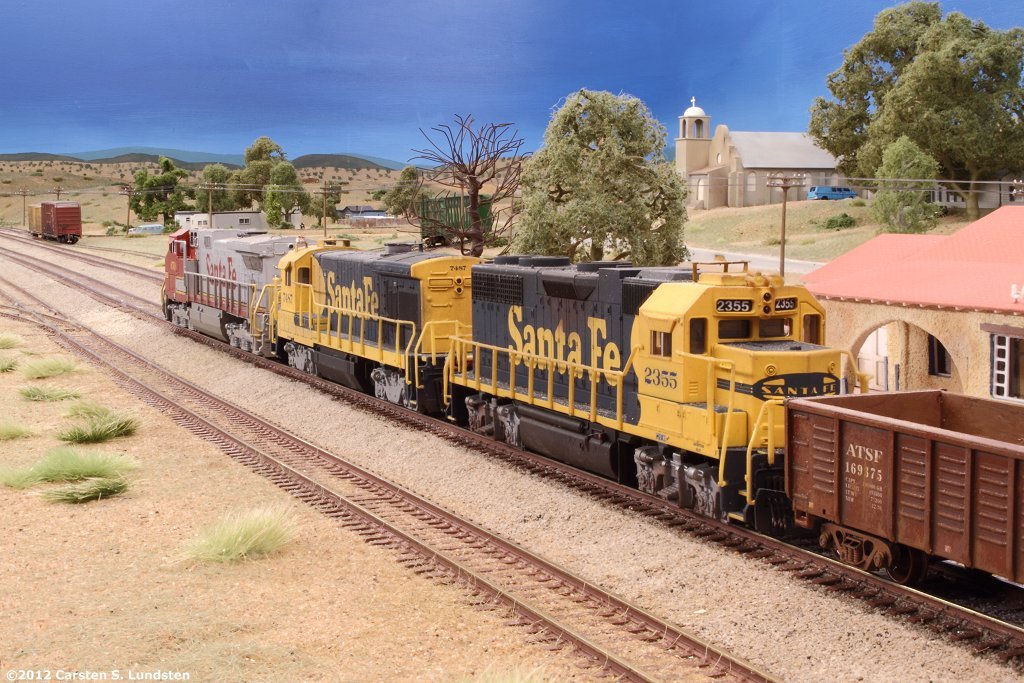 |
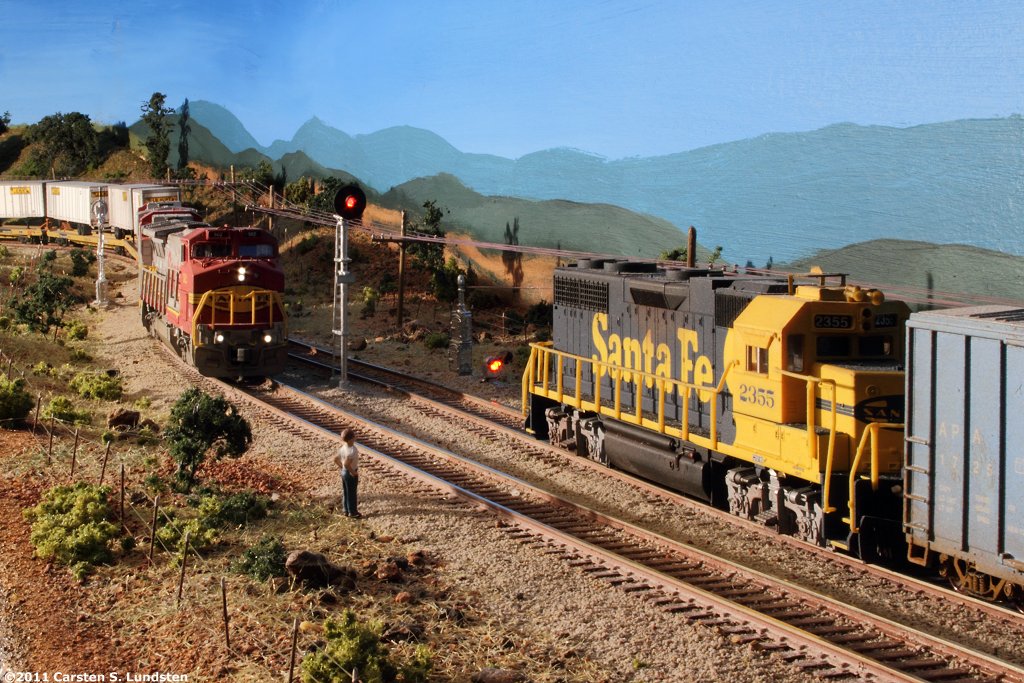 |
||
 |
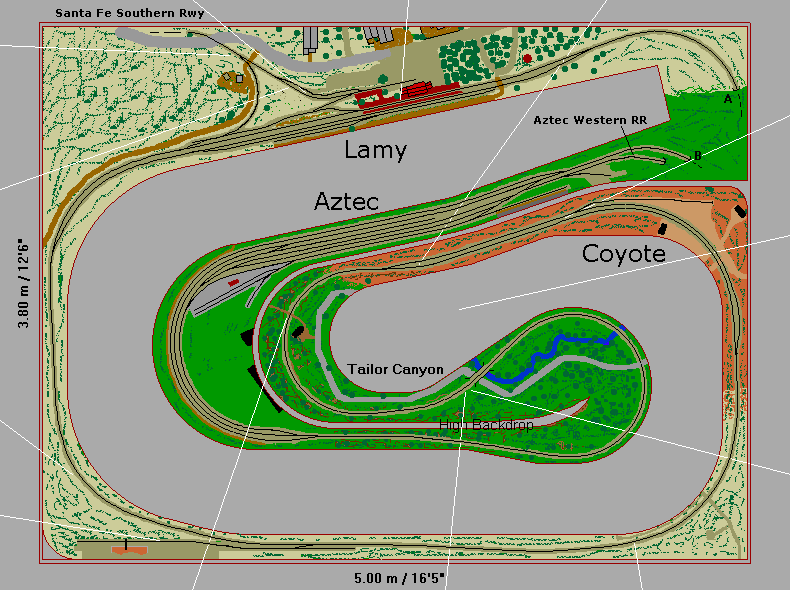 |
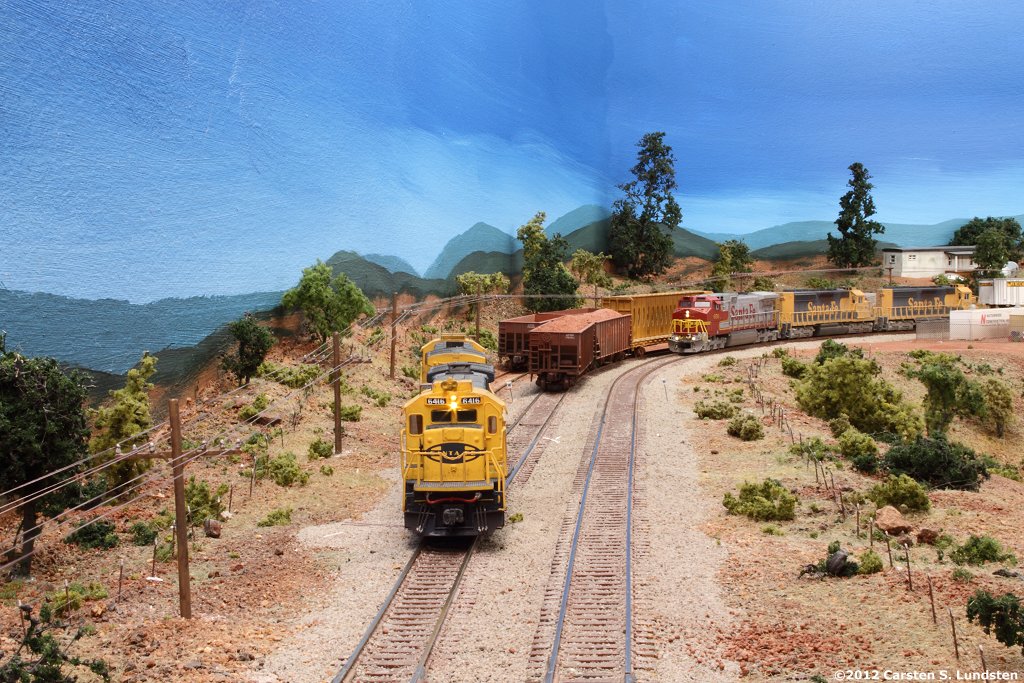 |
||
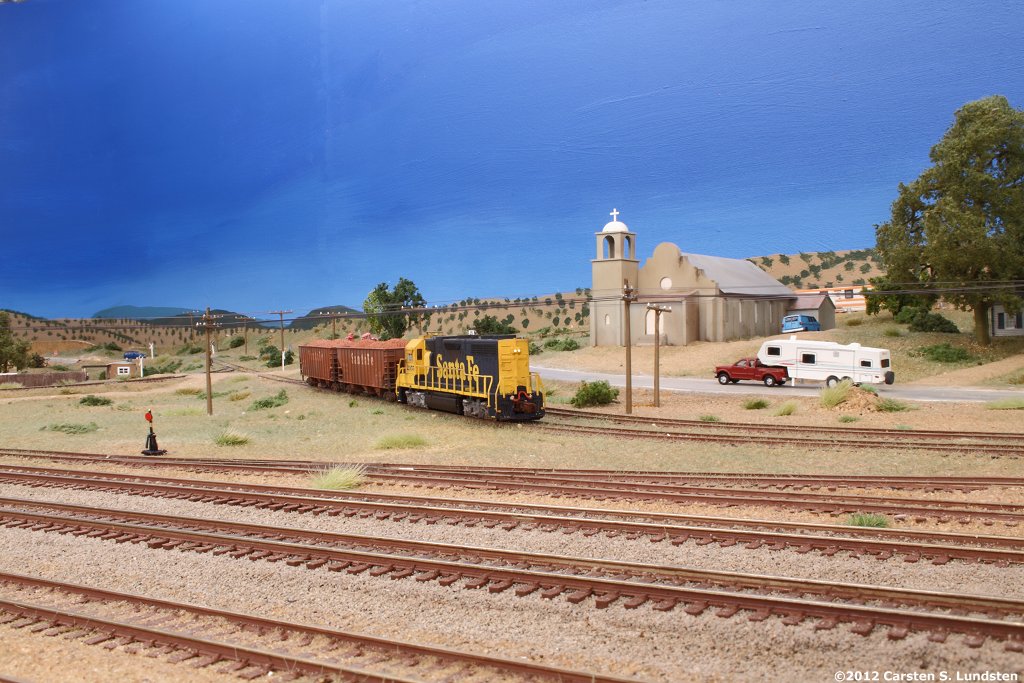 |
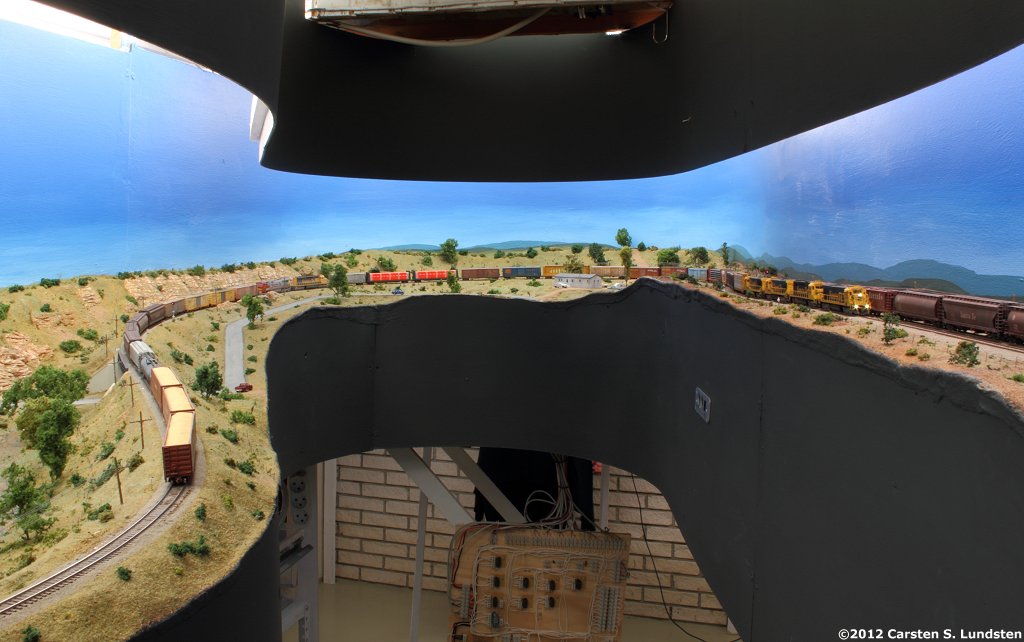 |
|||
 |
 |
|||
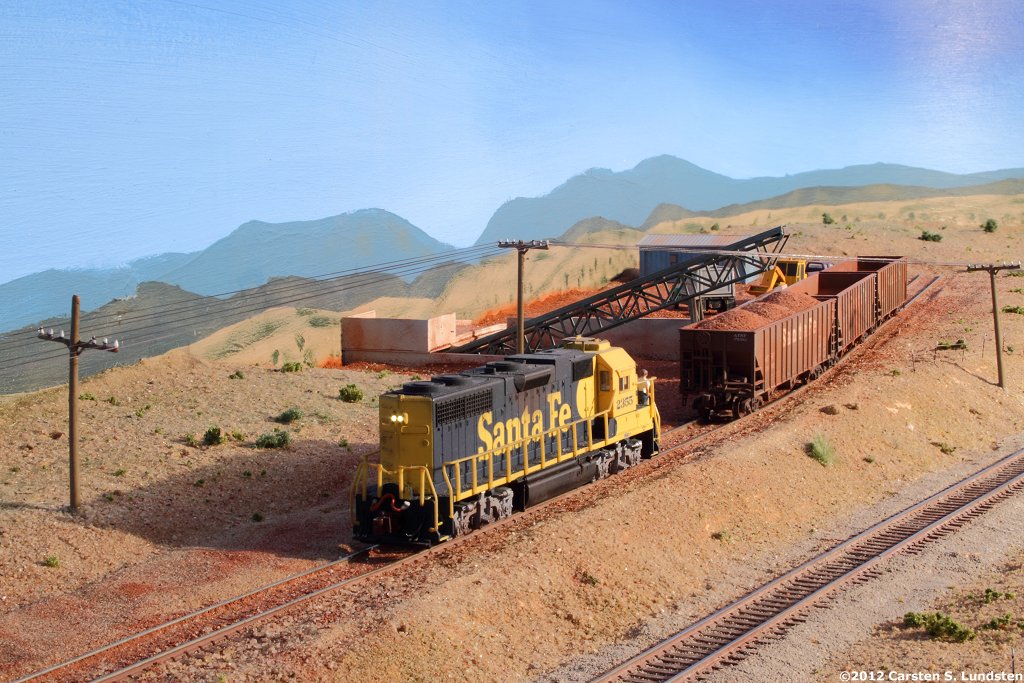 |
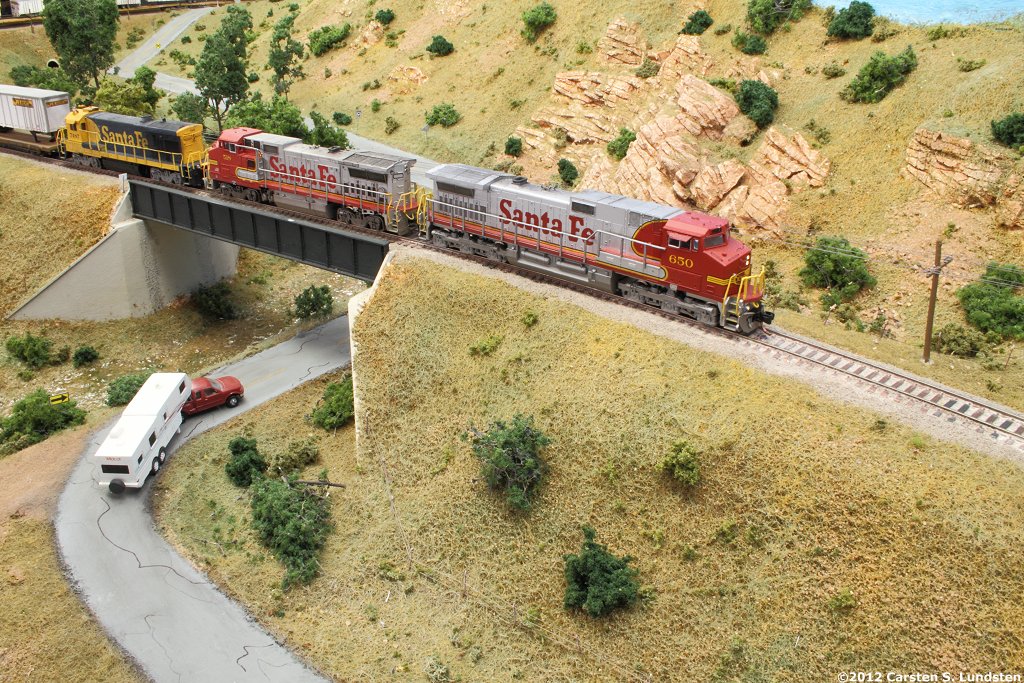 |
|||
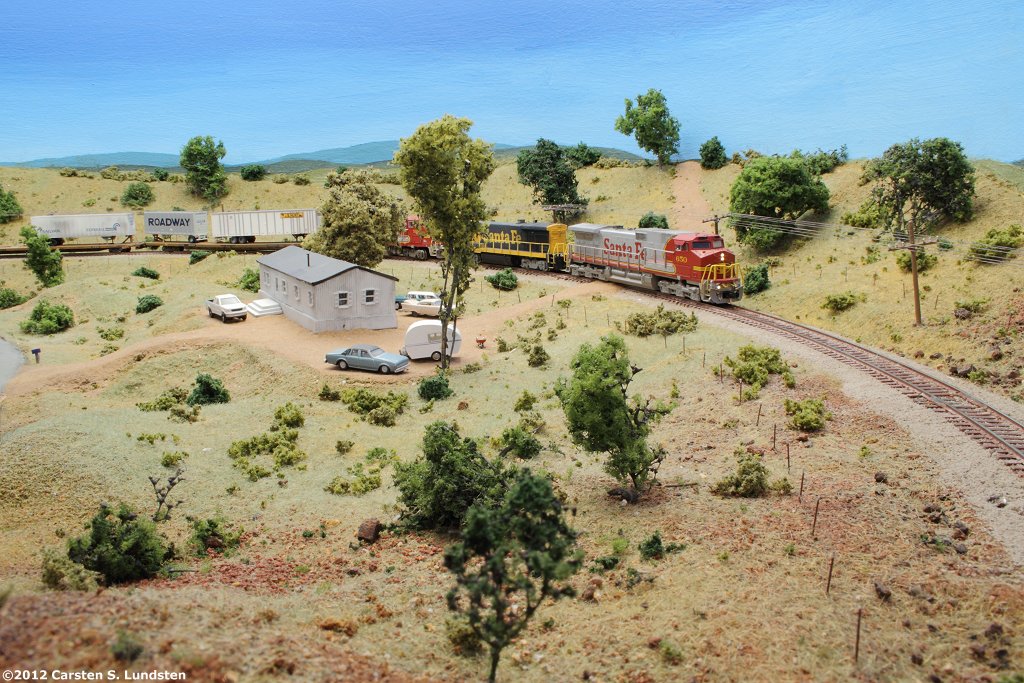 |
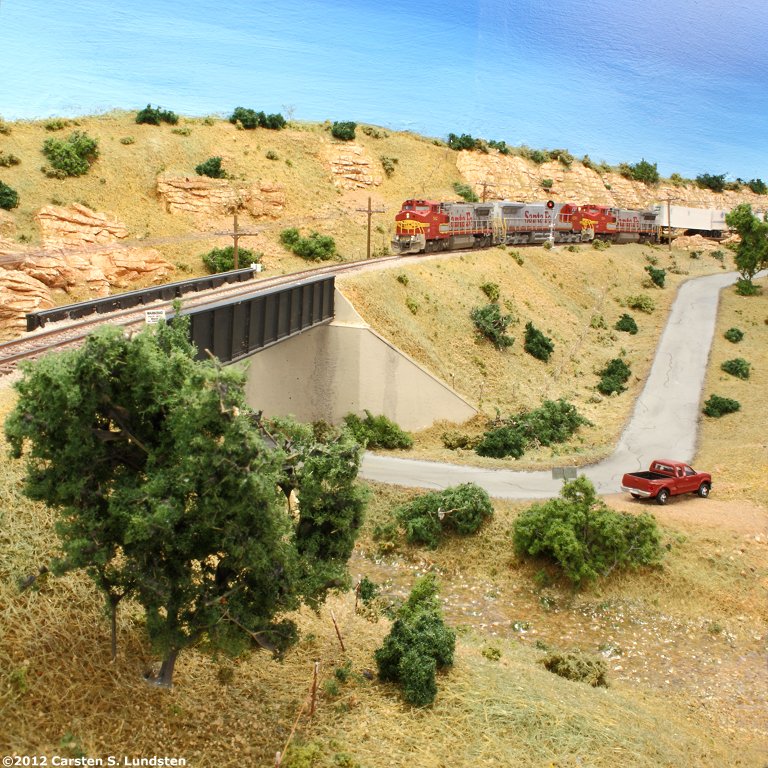 |
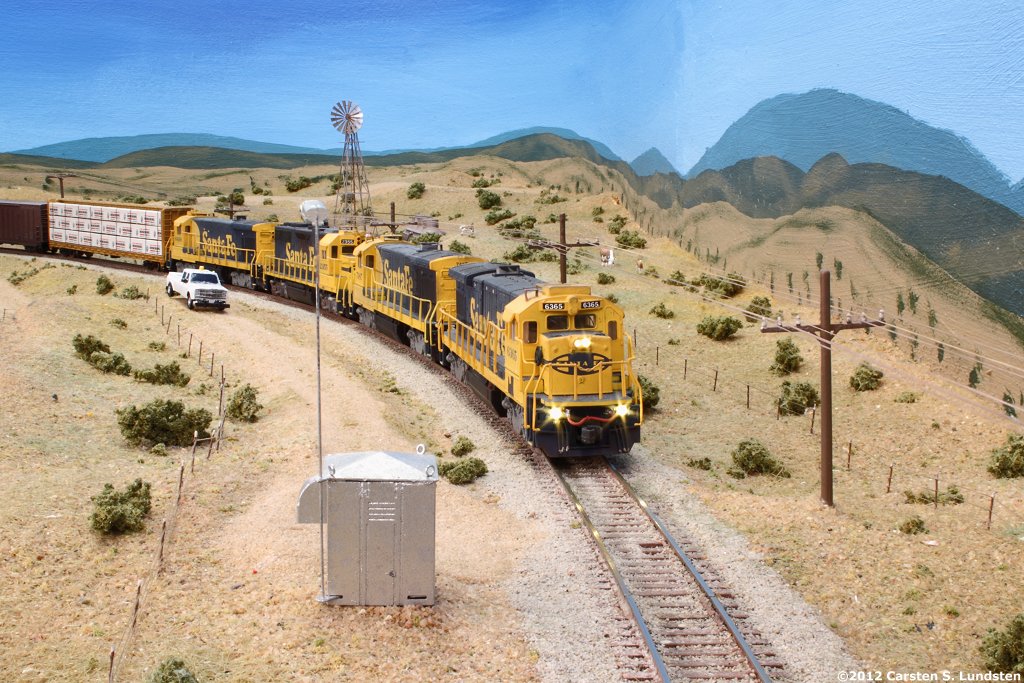 |
||
The layout concept was a walk-around type of layout, i.e. the tracks ran in narrow diorama-type scenes, separated by high backdrops where necessary, allowing operators to walk along their trains without duckunders. I first saw this layout concept in a video featuring David Barrow and his Cat Mountain and Santa Fe Railroad. It immediately turned on my lightbulb. For some reason this type of layout is very rare over here in Europe. The mainline was almost 30 m (100') long and never ran through the same scene twice. The layout had a common staging area (with return loop) for both ends of the visible mainline, and as such was a loop-to-loop type of layout. Later the staging yard was removed and a new one was to be built in a naighboring room but it never came to be.
The setting was a mostly fictitious part of the old AT&SF mainline over Glorieta and Raton passes. The track plan is shown above, with a raw sketch of the scenery. Only the town of Lamy was to be modeled true to a specific prototype. The rest of the layout was just meant to catch the "feel" of northern New Mexico. The scenery along the lower wall was inspired by the area between Albuquerque and Lamy, Coyote bore some resemblance to Glorieta, and Tailor Canyon was inspired by Shoemaker Canyon. Aztec was ever scenicked and I hadn't made up my mind what it should be like. High plains like the Wagon Mound to Raton area was an likely option, as Aztec Yard and crew change point was somewhat inspired by Raton NM.
Traveling north (railroad eastbound) the train enters the layout from the tunnel at "B". The line is prototypically operated under Track Warrant Control and Automatic Block Signaling (well, signals were only
installed between Aztec and Lamy). At "B" we're within Aztec yard limits. To our left another line becomes visible. This is the Aztec Western RR, a shortline connecting an industrial park some 30 miles away.
The train passes the start of Aztec Siding and yard, and runs along the yard. Just where the big curve at the east end of Aztec starts is the yard office, located next to the little engine service facility. The train stops here for a crew change. Our helper set for the climb through Tailor Canyon waits next to the yard office. After the crew change, the train pulls ahead past the engine facility and the business district (not shown on the sketch above) inside the curve. The train stops with the lead locomotives through the curve. The helper crew separates the train and the head end pulls ahead to allow room for the helper to cut in at the crossover from the yard.
After reassembling the train and doing the air test the train gets a track warrant, checks the automatic block signal just ahead of the switches is green and throttles up. The main, the siding and the yard lead come together and the 3% climb starts. The train slowly snakes its way up and into a long lefthand curve towards Tailor Canyon. In the middle of the curve we cross Tailor Rd and Tailor Creek before heading almost straight, crossing the creek and the road again. After following the side of the canyon for a short while, the line curves sharply right, past a home and out of the canyon. At the end of the curve Coyote siding starts. Shortly thereafter the 3% climb changes to a 2% descent. The line curves right through the little settlement of Coyote and about at East Switch Coyote the grade flattens to 1.5%. The train rolls forward to position the helpers at East Switch Coyote. Coyote siding is fairly short and mostly used for the helpers and the local. After cutting the helpers out the train accelerate across the relatively flat land.
On the way to Lamy across high desert plateau our train passes a small stone transfer industry to the left (where formerly Duolith Cement was located). The train drops downgrade in a righthand curve towards West Switch Lamy, dynamics howling, to stop at the West Switch Lamy to line itself into the siding. To the left is the small yard and wye belonging to the branch line to Santa Fe. Since 1992 the branch line has been operated by the Santa Fe Southern Railway. After passing the depot, which is still active as the Amtrak stop for the town of Santa Fe, the train stops at the end of the siding waits for the westbound SouthWest Chief. Today the Chief's meet at Coyote, so the grainer will stay in the hole a while for the eastbound Chief and then follow him east.
| Railroad | The Atchison, Topeka and Santa Fe Railway |
| Locale | Lamy NM, Northern New Mexico |
| Scale | N (1:160) |
| Minimum radius | 50cm (20") on the mainline, 30cm (12") on the SFS |
| Maximum train length | 390cm (13') |
| Length of visible mainline |
28,5 m (93') |
| Maximum grade | 3% |
| Layout height |
133 cm (4'4") to 156 cm (5'1") |
| Layout style | Walk-around with a duck-under entrance |
|
|
|
|